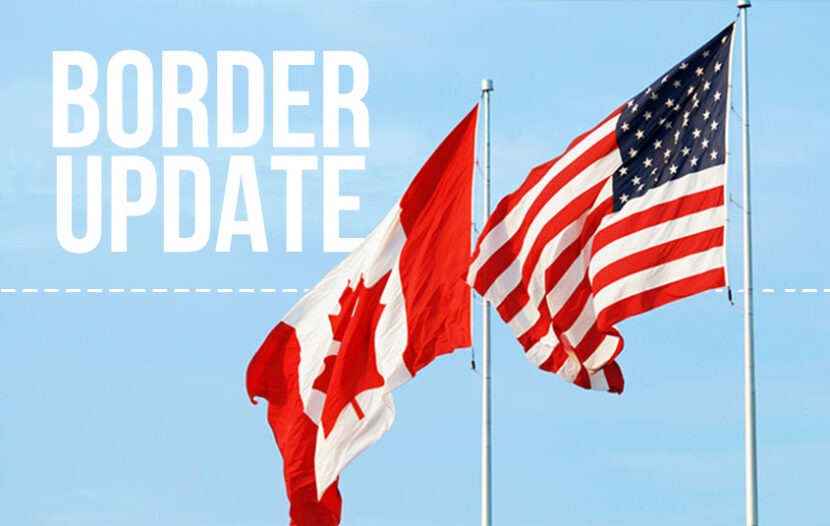WASHINGTON — The office of New York congressman Brian Higgins says the United States won’t be requiring fully vaccinated travellers to produce a negative COVID-19 test to cross the land border with Canada.
On Oct. 29, a spokesperson for Higgins says the agency is expected to release additional details in the next few days before the U.S. relaxes its border restrictions Nov. 8.
“U.S. Customs and Border Protection confirmed for us again today that there will not be a testing requirement for vaccinated travellers to cross the land border,” the office said in a statement.
As of Nov. 8, fully vaccinated travellers who are flying to the U.S. for non-essential purposes will have to show proof of vaccination before boarding, as well as the results of a negative test that’s no more than 72 hours old.
Unlike air travel rules, the U.S. did not include a testing mandate when announcing the reopening of the U.S. land border.
Higgins has already called on Canada’s federal government to abandon its requirement that travellers submit the results of a costly PCR test before arriving at a land-border crossing.
He says the $200 test remains a significant deterrent to travel and a drag on the economic recovery in border communities.
Dr. Theresa Tam, Canada’s chief public health officer, acknowledged Friday that testing is “very much a live issue” both inside the federal government, as well as in discussions with provinces and territories.
But as of now, she said the testing requirement remains an important safety measure, even with strong vaccination rates in Canada, particularly given the uncertainty surrounding the Delta variant and lingering questions about how long vaccines remain effective.
“No layer of protection is ever 100 per cent perfect, we know that,” Tam said.
“With all these considerations, I think having that additional layer of protection (from testing) is important at this time, but we will review it.”
Later Friday, the Washington-based Wilson Center released a final report from its task force on public health and the border, a group that includes former public safety minister Anne McLellan and ex-Quebec premier Jean Charest.
Next time – and there will be a next time, the panel warns – a plan to mitigate risk rather than trying to reduce it to zero would ultimately be a better solution, its members said Friday.
“A lot of people personally suffered through this period; there was a very high cost on a personal level that can’t be measured, but it was real,” Charest said during the virtual launch of the final report.
“If only for that reason, we believe governments would be well-advised to look at more of a risk management approach.”
The panel also found that despite the lived experience of similar public health crises in the past, such as the SARS outbreak in Toronto in 2003 or the H1N1 swine flu pandemic of 2009, neither country seemed to apply the lessons they had already learned.
And despite public pronouncements of a mutual, bilateral plan when the COVID-19 border restrictions were first imposed in March 2020, Canada and the U.S. didn’t actually work together on the strategy as closely as was believed, Charest added.
Unlike in the immediate aftermath of the 9/11 attacks in 2001, when the U.S. suddenly and unilaterally closed its borders to international travel, “this time, a decision was taken to act together, and to be synchronized,” Charest said.
Among the report’s other findings:
- There was no tangible plan in place for a return to normal operations, making for uneven and unpredictable conditions across the length of the 9,000-kilometre border;
- A lack of government responsiveness to the concerns of individuals and businesses undermined public confidence in the measures and their efficacy;
- The restrictions focused on the purpose of travel, rather than on engaging members of the public about how they could cross the border safely;
- Legislators and lawmakers at the national level were “largely marginalized,” as were regional and local government officials;
- Both countries missed the opportunity to partner with the private sector and incorporate input from businesses on how best to manage the restrictions.
The panel also called for border authorities to be more creative in finding solutions for people with urgent travel needs, including through pilot projects, “trusted tester’” programs and adapting restrictions in various regions to better suit the needs of local communities.
“Quite candidly, at the end of the day, we don’t want a separation,” Gregoire said. “We really fundamentally believe that there are technological advances, there are opportunities. If we can keep planes in the air, where people can travel, we can keep that border open.”

